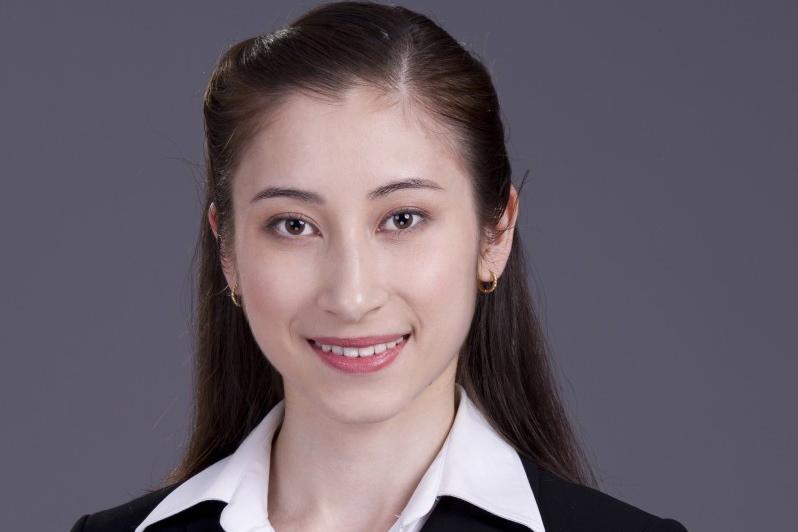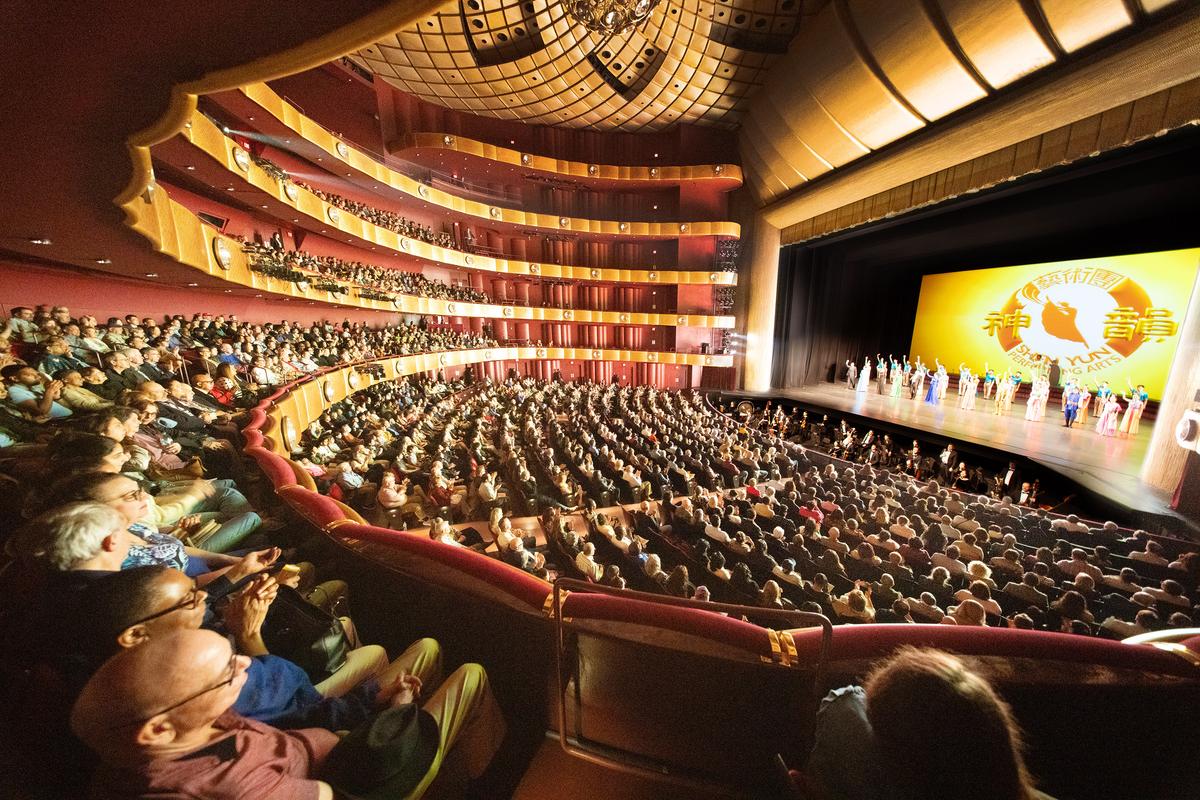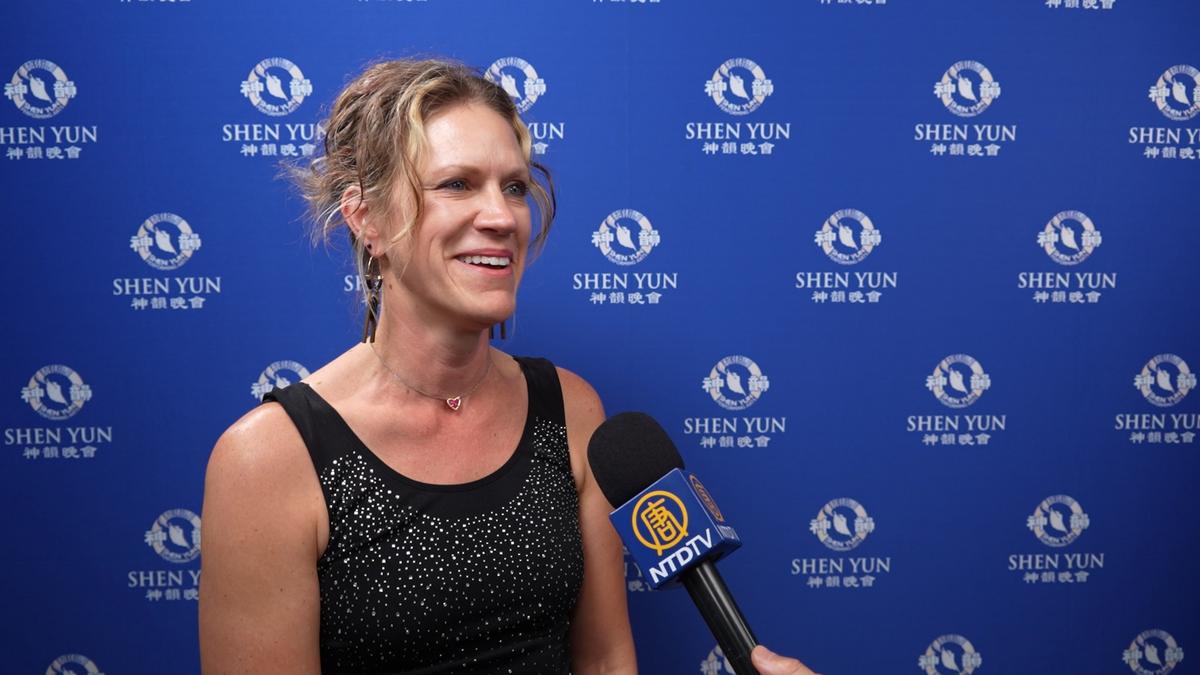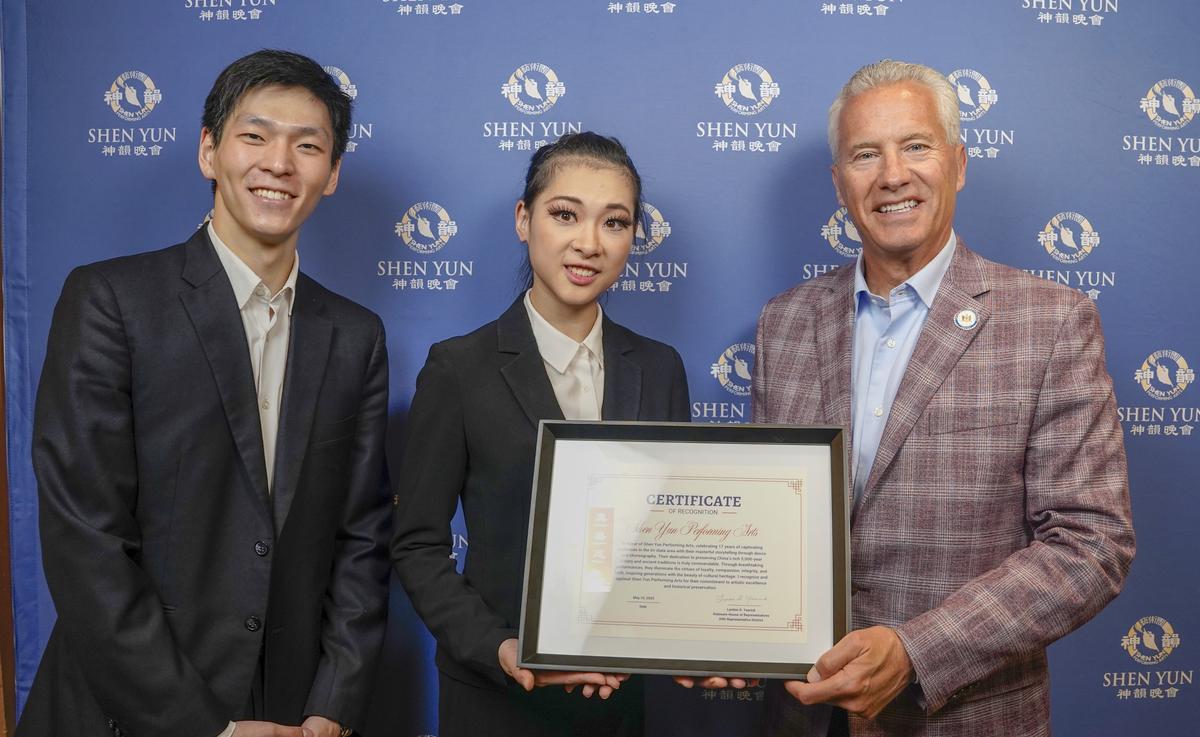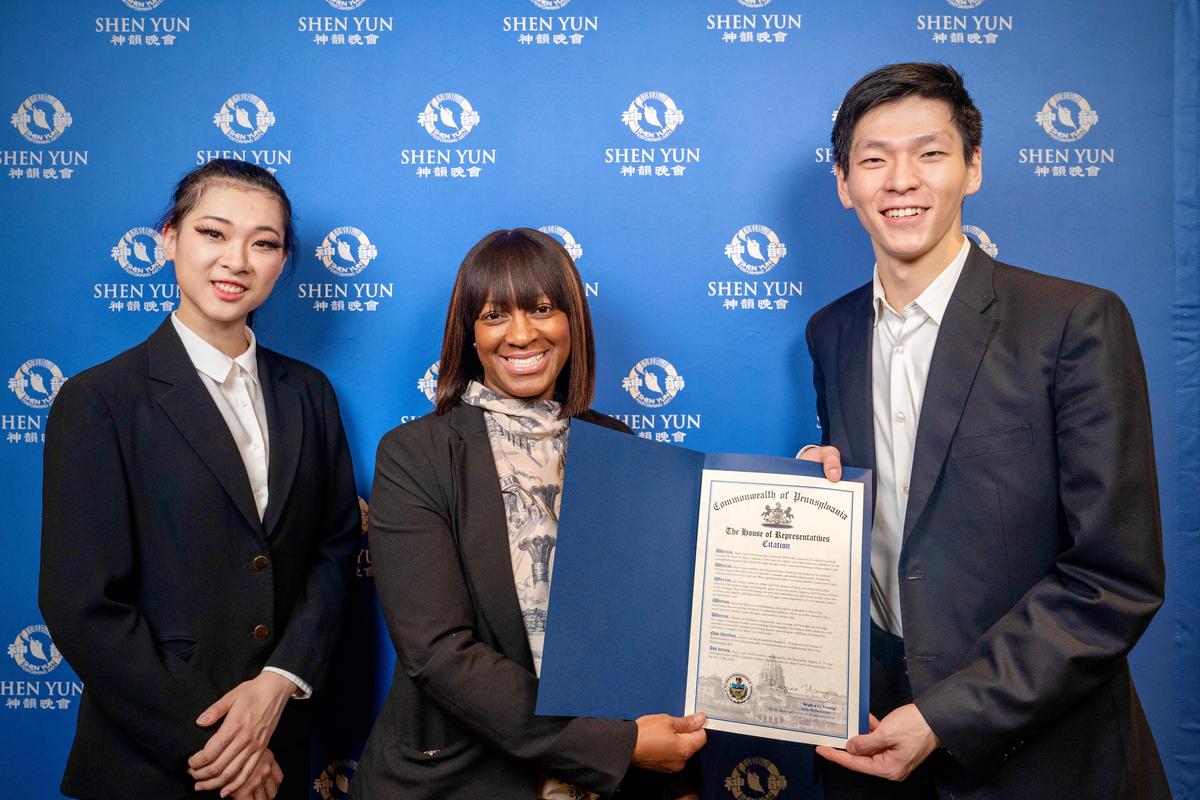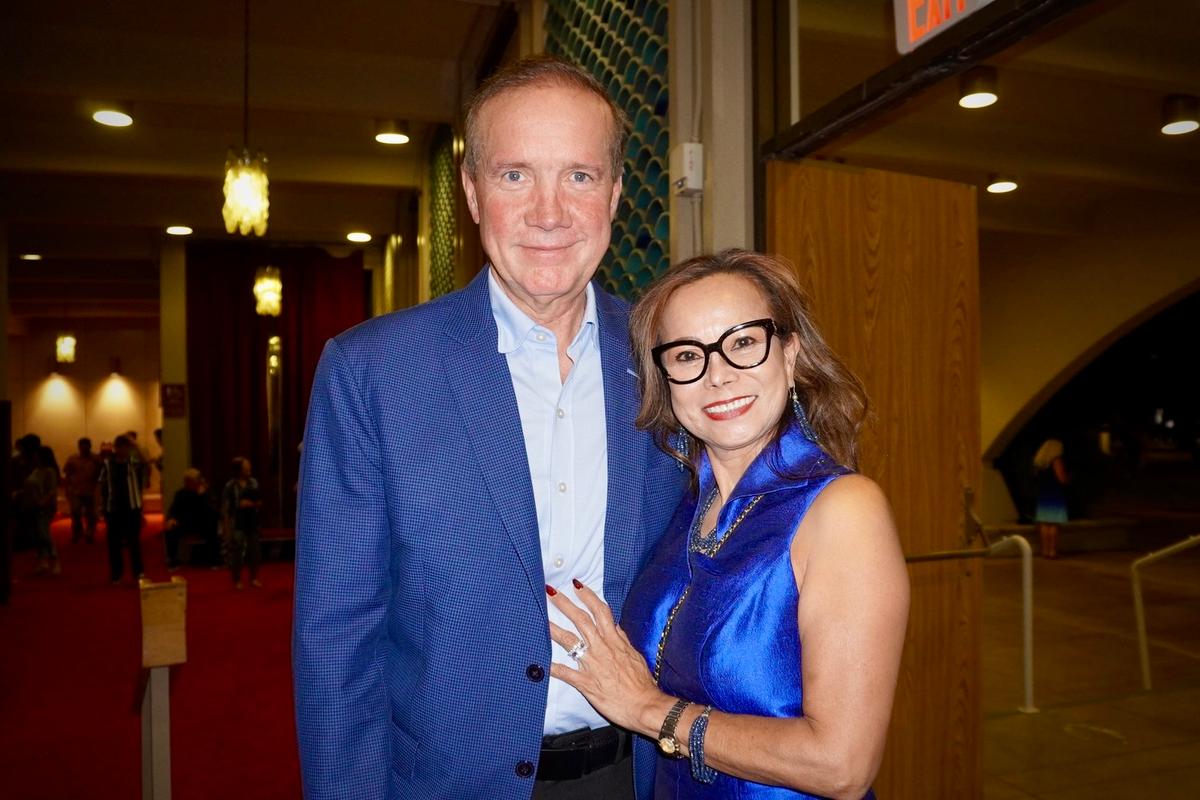Classical Chinese dance has an expressive quality that lets a dancer portray nearly any person from any part of history. This element of the art, however, is not based solely on movement. It’s based in an understanding of the art, and on the artist being able to connect with and emulate the nature of a character.
Rachael Bastick, attending Fei Tian Academy of the Arts and performing in a practicum at Shen Yun Performing Arts, said capturing this expressive quality is one of the more difficult aspects of classical Chinese dance. Through her years as a classical Chinese dancer, she has taken on various roles—often performing some of the more difficult movements during the different dance pieces. And as an accomplished dancer, she also takes lead roles in the performances.
“This year I played the friend in The Choice. That was really, really challenging because you have to work on your acting skills, and on what emotions you have to convey,” Ms. Bastick said.
The dance piece she referred to tells of two friends who graduate from college in China. One is recruited by the police, and the other, portrayed by Ms. Bastick, begins practicing Falun Dafa, a Chinese meditation practice based in being honest, kind, and tolerant. The Chinese Communist Party later outlaws the practice, and the young man is sent with a group of police who beat a group of Falun Dafa practitioners protesting on Tiananmen Square. The young man changes, however, and protects her instead, giving his life in the process, but is ultimately rewarded by Heaven.
“I had to try to feel the pain when he gets hurt later on, and dies, basically in my arms,” Ms. Bastick said. “So I had to convey that to the audience so they could understand the message through it.”
Being able to convey feelings like this through dance is no easy feat, and in classical Chinese dance, it’s something that takes years of practice.
“In Chinese classical dance, it’s from the very fundamentals,” Ms. Bastick said. “It’s not just like the technique or something, or flexibility.”
Training this quality is a long process. The dancers first need to learn specific breathing techniques, then various hand and eye movements. These then build into what roughly translates to character pieces, where the dancer learns to portray different characters.
“There can be fast ones, slow ones, really beautiful ones, graceful ones—and they each have different characteristics about them,” Ms. Bastick said. “But the only way you can really portray that well is if you understand it in your heart already.”
This ties into some of the deeper traits of classical Chinese dance, and China’s 5,000 years of culture, which it’s rooted in. “In Chinese history they always spoke of respecting the divine and the heavens, and it was known to be passed down through the divine,” Ms. Bastick said. “So throughout Chinese culture there were really good qualities, and respect for that. Lao Tzi, what he passed down were cultivation forms. Then what Confucius passed down were filial piety and respect for people.”
Likewise, when it comes to art, there is a belief that to create true art, the artist needs to reach a state of inner purity, and the power of the art is a reflection of that.
“You really have to keep that purity and compassion, like you really want to do this for whoever is watching,” Ms. Bastick said. “So the only way to show it well is if you really have that in your heart, in classical Chinese dance. Because if you don’t, nothing comes out.”
“As the years progressed, I realized that to be a good dancer you really need to let go of yourself, and any thoughts that are negative or doubting,” she said. “When you do that, it goes by like a really swift breeze. It’s nice, and you don’t feel tired, and you enjoy it because you can tell the audience really enjoys it too.”
“For me, it’s about doing it for the audience and not for me, so that people will gain something out of it. Even if it just makes their night happy, or if they can relate to a spiritual message, or if they just think that this is really good,” she said. “They find hope from our performances because we show positive things and being good people, and things like that. Because there is higher hope in the Heavens.”
In classical Chinese dance, however, maintaining this state doesn’t just apply for the character pieces. It applies to the other dances as well—particularly with dances that are more demanding in technical skill.
Ms. Bastick said dances that involve spinning handkerchiefs are some of the most difficult she has done. Each dancer will have a handkerchief in each hand, which they twirl as they dance. In the latest performance, Ms. Bastick had to toss these handkerchiefs over her shoulders while dancing. At one point, she and several other dancers even toss the handkerchiefs into the air, do various forward flips, then catch them.
She said with these difficult pieces, tranquility and practice are key. “Then it really does turn fun and you don’t get nervous. I think that’s when the connection is really good with the audience, because they feel it.”
The expressive qualities of the dance are also important throughout. Ms. Bastick won third place in the 2009 NTD Television’s International Classical Chinese Dance Competition, then first place at the 2010 competition.
She said at the 2010 competition, “I just really practiced to my limit. I just felt like I wanted to try to see where my limit was and how much I could achieve,” and it showed.
The name of her dance piece roughly translates to Floating Clouds, Trickling Water, which, she notes, sounds much nicer in Chinese. She pulled from concepts often found in Chinese poetry and painting—references to nature, its balance of Yin and Yang, and its beauty. Chinese people sometimes compare music to the sound of flowing water, or dance movements to the wind.
In her dance, Ms. Bastick said, she wasn’t trying to show herself as clouds and water, “but to show that sense of nature, and of Chinese dance and how it can connect—how the movements can seem like that.”
“It’s what it symbolizes. Clouds, they can float around, they can be huge or they can be small. There’s nothing that stops them,” she said, adding, “Someone’s willpower can be like water. Water doesn’t look strong, but you can’t break it.”
“You can really convey a lot of things, not just through the movements, but also how you feel in your heart,” she said. “I think it kind of emits some sort of field or energy that people can feel as well, and it can affect them in a positive way. So to take part in something that does that, I think, is really special and magnificent.”

